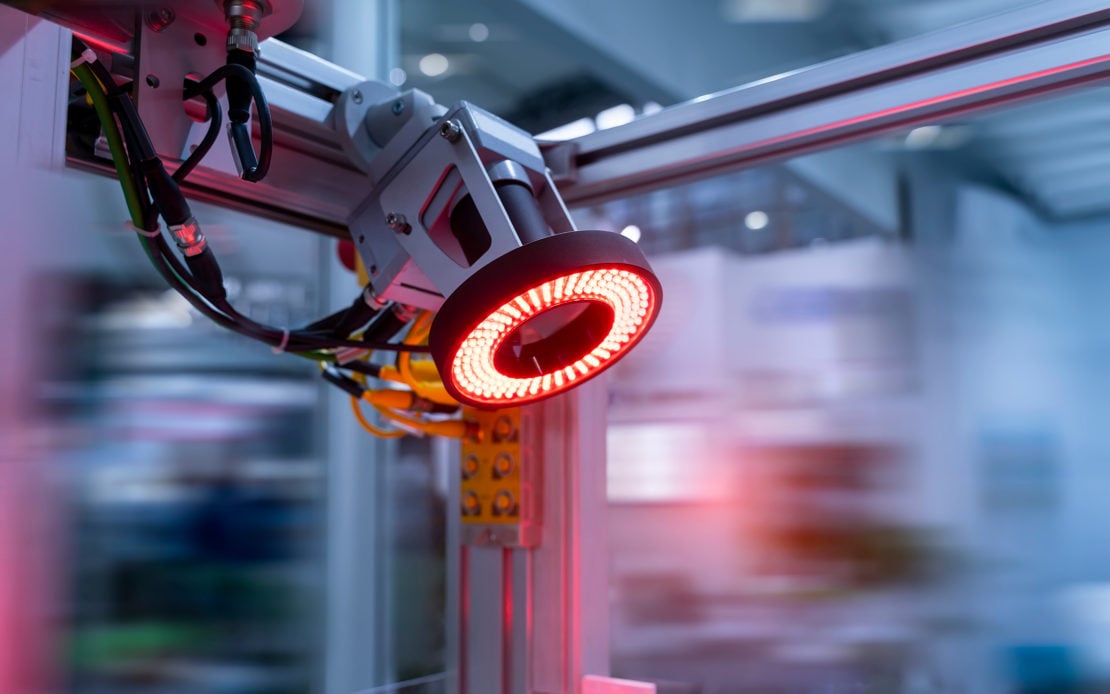
Instrumenting industry to move towards net zero
October 2021
By Smart Energy & Industrial IOT team at 42T

As governments have been laying out their Net Zero route maps in recent years, large numbers of businesses have been setting their own decarbonisation targets, for both their operations and their supply chains.
Many industrial companies still have much to do in this area, and are looking at a combination of step changes in some parts of their operations, and incremental changes in others. By deploying the latest generation of instrumentation technology, those incremental savings can be substantial.
The International Energy Agency has estimated that, worldwide, improved energy efficiency could deliver 40% of the emissions cuts required to meet Net Zero targets. So there is a lot of scope to achieve these savings through better instrumentation.
Instrumentation allows a business to go much further than just achieving energy efficiency savings. Through better, deeper and wider understanding of the lifecycle of manufacturing processes and product activity in the field, continual adaptation to changing conditions is possible, potentially even in real-time. This can deliver peak performance and minimised resource usage (including carbon) throughout the operational lifetime.
Gathering operational data in real-time is a pre-requisite for digitalisation. There is a big difference in usefulness, however, between the data that is easy to gather and the data that ideally ought to be gathered. While monitoring functions can easily be designed into new equipment, retrofitting already deployed units to detect key operational parameters is just as vital. Doing either at a cost-effective level of investment is crucial. Ensuring these functions can talk/co-operate with each other is often difficult.
Achieving all of this, and delivering this data to a co-ordinating entity, allows business-wide visibility and operational improvement – ideally in real-time. This is when digitalisation can really deliver, particularly on decarbonisation by combining this intelligent and informed oversight with an understanding of the carbon cost of the various activities.
Local intelligence is another building block in this new approach. Whether we’re looking at production line equipment or commercial product, as monitoring capabilities increase thanks to better technology, so can autonomous operation. In a naïve implementation, the collected sample data could overwhelm the available connection link, requiring local filtering/summarising.
The intelligence required to do this can also analyse its local status, and receive updates from other processes, to make informed but local decisions about operational changes. These would normally be tightly bounded to avoid unacceptable aberrant behaviour, but could also extend to autonomous shutdown to preserve safety or integrity.
The ability to intelligently monitor local status, and to act based on local conditions and also an understanding of the wider situation, combines local machine intelligence, connectivity, and system-wide knowledge so that the whole can start to be seen as greater than the sum of its parts. We call this concept “Connectedness”.
Connectedness can deliver decarbonisation. Knowing how the carbon price of the electricity supply varies over time lets utilisation levels be adjusted to maximise output when the carbon price is lowest. Such utilisation requires external knowledge (the carbon price) to combine with knowledge of process capabilities locally and across the system (via connectivity), driven also by commercial issues (eg required output). Connectedness is therefore a key enabler for digitalisation.
This concept of ensmartening a process’s endpoints can be done in various ways. Monitoring internal, operational or environmental parameters requires local intelligence to manage the sample dataset sizes and to coordinate the connectivity links. Analysis of the measured parameters can also give an insight into the internal condition of the equipment.
Intelligent analysis lets a process be adjusted for optimal performance, potentially autonomously by the endpoint itself. It also allows pre-emptive maintenance to be scheduled when a growing failure mode is detected. The alternative can lead to catastrophic failure modes, which can be costly – not just financially, but in carbon terms too.
Suitably ensmartened endpoints can optimise resource utilisation (including carbon) at every step of a process. Digitalised manufacturing processes can make best use of low-carbon energy supplies, matching highest output to the lowest carbon periods. System-wide optimisation built on top of such connectedness enables informed autonomous decision making, which enhances best usage of resources even where knock-on effects are counter-intuitive. Local insight into the operational status of individual processes allows machine efficiency to be improved rather than wait for uneconomic failures.
42 Technology is a leader in working with industrial partners to decarbonise manufacturing processes and end product operations through instrumentation, ensmartening and connectedness as key elements of a digitalisation process.
If you would like to find out more, please contact us
answers@42T.com | +44 (0)1480 302700
Share this article:
Related Articles

Consumer, Sustainability
The refillable revolution - the sustainable future of grocery shopping

Sustainability, Industrial
The surge in the global Blue Economy - what role for deep tech?

Sustainability, Industrial
The hydrogen economy - solving difficult challenges towards energy transition

What will you ask us today?
We believe in asking the right questions to drive innovation; when we know the right questions, we generate the ideas to answer them.

